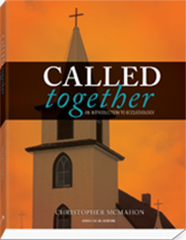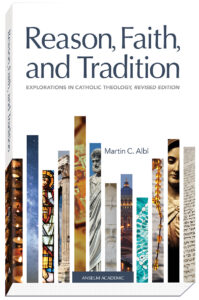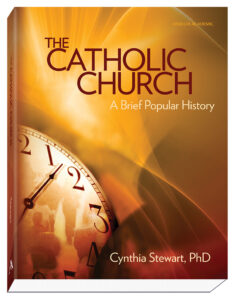Called Together
An Introduction to Ecclesiology
About This Book
Overview
Designed for College Students Taking Their First Course About the Christian Church
This introductory textbook on the Church—its nature, structure, and fundamental saving mission—presents a theoretical and practical basis for helping students think critically about the Church. With this new resource as their guide, readers and instructors can enter into a conversation about the Church that resonates with their experience and challenges their assumptions, without letting the history of the Church or its power structures dominate the discussion. The text is written from the perspective of contemporary Roman Catholic theology, yet offers an account of the Church and its mission that will resonate with Christians from other traditions.
Each chapter includes these sections:
• Questions for Understanding highlight important aspects of each chapter and help students focus their reading.
• Questions for Reflection help students engage with the material in ways that take them beyond the text and the classroom.
• For Further Study sections lead readers to discover additional resources for thinking about the Church.
• Sidebar features throughout the text supplement and advance the central issues.
Details
| Weight | 0.75 lbs |
|---|---|
| Dimensions | 7.25 × 1.5 × 9.125 in |
| Format | Softcover |
| Print ISBN | 978-1-59982-005-7 |
| Pages | 225 |
| Item # | 7030 |
|---|
Customer Reviews
“Professor Christopher McMahon centers his ecclesiology firmly on the Paschal Mystery, and rightly so. Drawing on cutting-edge scholarship in Scripture, history, liturgy, systematics, and ethics, he provides a contemporary, ecumenically sensitive, and practical vision of the Church that will challenge students’ minds and inspire their imaginations. Called Together is a terrific textbook!”
Catholic University of America, Washington, DC
“Reading Christopher McMahon’s Called Together reminded me of the restoration work on the Sistine Chapel. Beneath layers of accumulated dust and grime, the artists showed a magnificent, bright, colorful work that challenged sensibilities and elicited deep thinking on the nature of God, and on creation, life, death, judgment, and resurrection. Chris has done similar work in helping us think about the Church. Recent years have made us keenly aware of the grime, but he has shown us that underneath it is something beautiful, dynamic, and challenging. I recommend this substantive, erudite, and yet very readable book to both students and others interested in a basic question: who does Jesus call us together to be for the world?”
“Christopher McMahon, professor of theology at Saint Vincent College in Latrobe, Pennsylvania, has previously authored an introductory volume regarding Christology. His latest publication is a similar textbook dedicated to the study of ecclesiology, or what M. defines as the root meaning of the Greek word ekklesia, which translators of the New Testament render as ‘church’ (1). M. further views ecclesiology in light of his childhood experience of being called together, in both the familial and communal sense of Church. His hope is that his latest textbook will address the apparent marginalization of ecclesiology as a focal point of theological education (2).
“Based upon his emphasis of the mission of the Church from a salvific perspective, M. greatly succeeds. M.s thesis is comprehensive, as evidenced by his treatment of soteriology. He provides not only a Roman Catholic perspective of sin and redemption as seen through Bernard Lonergan’s Law of the Cross, but an historical locus of the Anselmian (i.e. vicarious satisfaction), and Calvinistic/Lutheran (i.e. penal substitution) theories. Anselm’s theory of vicarious satisfaction, while proven to be not completely accurate, displays the tension between humanity’s sinfulness and God’s love and justice. M. admits that since we already owe the precious gift of life to God, that we cannot offer anything to God that would make satisfaction for [our] offense and restore the order of the universe (31). Anselm allowed that the only method of restoring the universe to its proper state was by the sacrifice of the sinless Christ. Calvin and Luther both advocated for penal substitution—whereby Christ, both fully human and divine, bore the punishment of death in atonement for humanity’s sinfulness. In Lonergan’s Law of the Cross, the life, death and Resurrection of Jesus enshrine a precept (41), whereby humanity is enabled to participate in new life through transformative love and dying to Christ. Salvation for Lonergan is a shared event, in that it is a gift from God that is achieved through humanity’s repentance and conversion, in cooperation with God’s grace.
“Called Together is logically organized into seven chapters, with sections dedicated to the historical Jesus, the evolution of the Church’s self-understanding, the Second Vatican Council, and the Church and its role in the salvation of the world.
“After a brief but effective introduction, M. launches into a fascinating chapter that presents the history of Jesus as witnessed in the Gospels, hopeful that this understanding sets forth a theological and historical reading of the Jesus story in a manner that will highlight the communal and redemptive dimensions of that narrative (3). Chapter 2 focuses on soteriology, and how it has affected various beliefs regarding the Church and mission from the Middle Ages to the Counter-Reformation. For example, in tracing the development of salvation from the Anselmian theory to that of Calvin and Luther, we note a shift in the form of the Church from one where humanity shares in the satisfaction of Christ’s sacrifice, to a Church where humanity is called by faith to receive the gift of salvation.
“The next three chapters focus upon the Church in terms of its customs, and self-awareness throughout its history. Chapter 3 details the development of ecclesiology from the early Church to the modern period. Chapter 4 is dedicated to the Second Vatican Council, which M. describes as a watershed in the life of the Church and its relationship to the world (3). Chapter 5 addresses the ongoing conversation between the Church and the world that was begun at Vatican II, dealing with the impact of the globalized market culture in the era of modernity. Lonergan’s general bias of common sense is particularly insightful, in that our knowledge is acquired by and limited to experiential senses. Difficulties arise when we use our power of understanding to minimize the truth, so that what is good become[s] reduced to what is practical, tangible, and profitable (119).
“The final two chapters examine what it means to be called to conversion and life with Christ through the celebration of the sacraments (communion), and sent into the world as seen through the lens of Catholic Social Thought (mission).
“M.’s introductory volume on ecclesiology is highly recommended for college students on the undergraduate level, and also for members of various ministerial groups seeking to obtain a broader understanding of their roles both as individuals and communities within the universal Church. It is extremely well written, organized and concise, with an adequate index for easy reference usage. M. also provides a comprehensive list of multi-denominational works for further study, evoking the true spirit behind what it means to be called together for God’s greater good.”
Table of Contents
Introduction
- The Story of Jesus
Jesus and the Story of Israel
The “Kingdom” Story
A New Community
Conclusion - The Work of Christ and the Nature of the Church
Early Christian Approaches to Soteriology
Two Dominant Soteriological Approaches
Conversion and Subjectivity: The Heart of Soteriology
Conclusion - The Evolution of the Church’s Self-Understanding
Biblical Accounts of the Church
Patristic and Medieval Accounts of the Church
Conclusion - The Second Vatican Council
The Church in the Years Leading Up to the Council
Events at the Council
The Church at Vatican II
Conclusion - The Church in a Culture of Disbelief
New Attitudes and Outlooks in the Wake of the Council
The Call to Engagement
Conclusion - The Church and Its Liturgical Constitution
Liturgy and the Formation of the Self, Society, and Culture
The Council and the Principles of Liturgy
Conclusion - The Church and the Work of Redemption in the World
The Church, Social Ethics, and Politics
Catholic Social Teaching and Redemptive Action
Conclusion






